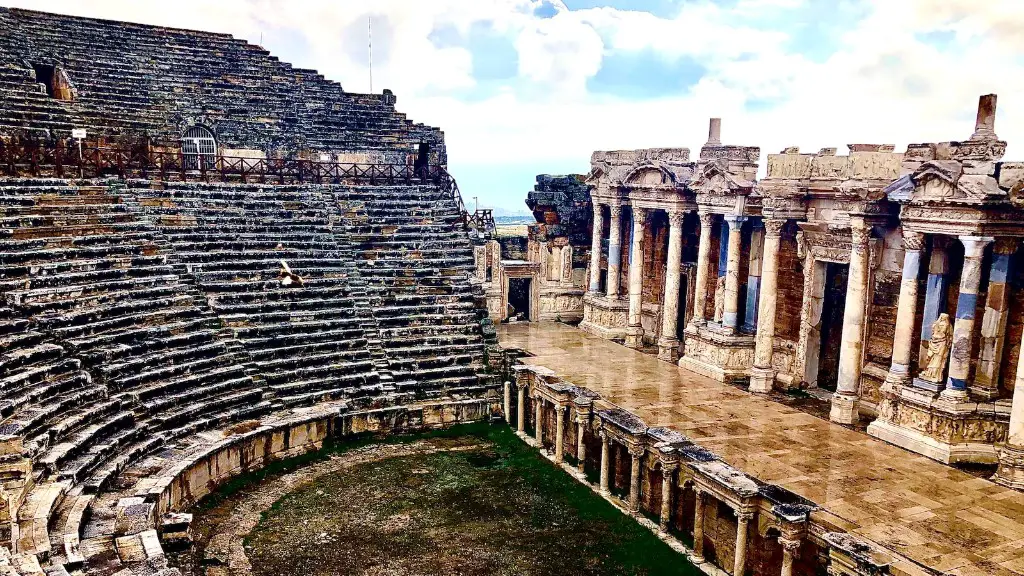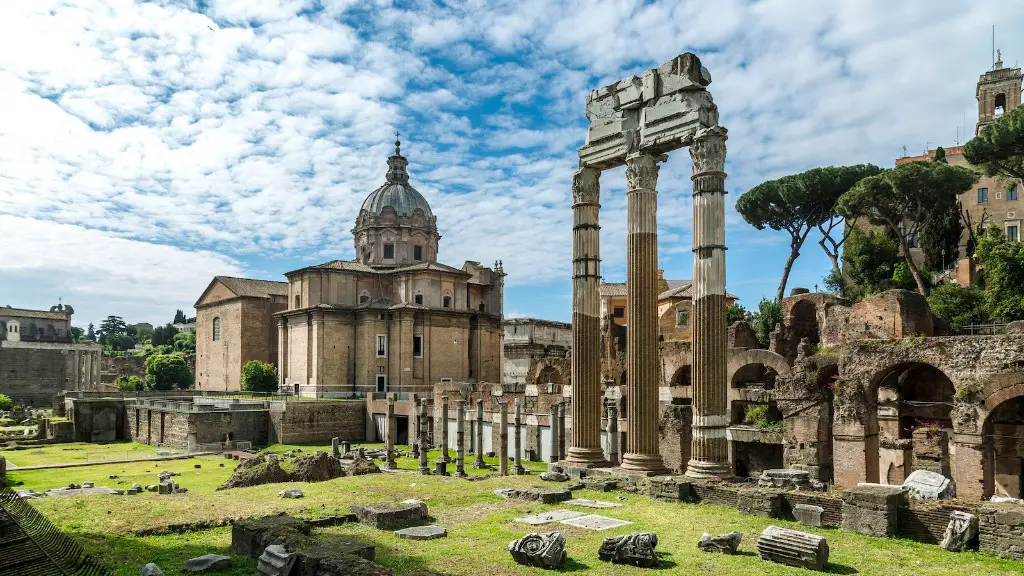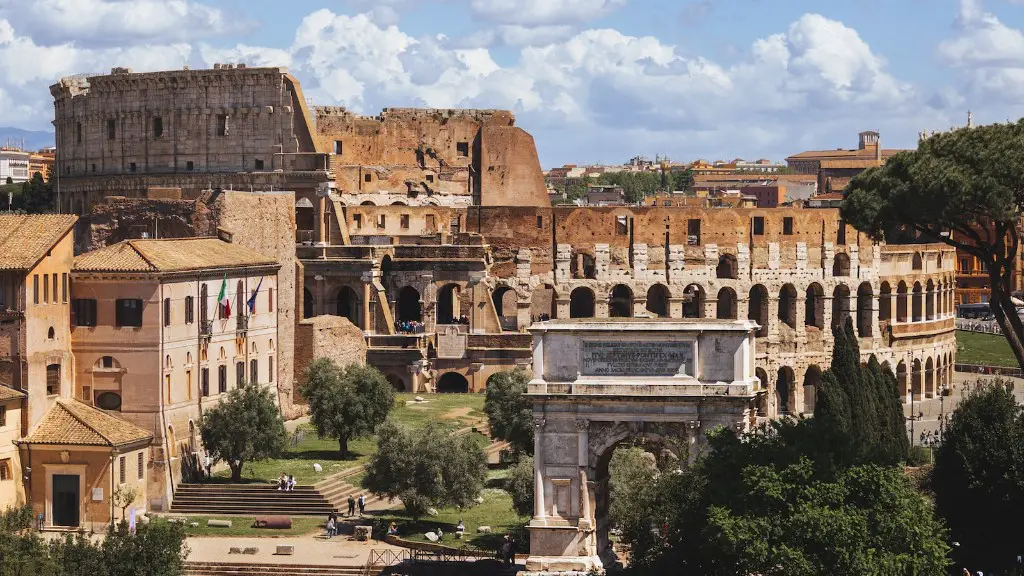Background On Roman Slavery
Slavery has been a part of the cultural history of many societies since ancient times, and it was not absent from the Roman Empire. Slavery in Rome started during its earlier stages as a purely rural society, and although it was practiced in the city itself, most of the slaves held in Rome were employed in agricultural and mining roles in rural areas. The majority of the slaves held in Rome were captured during the period of expansion and conquest, from countries from around the Mediterranean and the Middle East, with men, women and children being taken in large numbers.
Ancient Rome had a complex system of slavery, with all citizens of certain origins being automatically considered slaves, while those with citizenship formed the top echelons of society. This system enabled the Romans to build a powerful and influential empire, as slaves took on tasks that would have been too laborious for free people.
Types Of Slaves In Ancient Rome
The ancient Romans divided their slaves into two main categories: domestic slaves and agricultural slaves. Domestic slaves were generally bought by wealthy households and their main purpose was to take care of tasks such as childcare, cooking, cleaning and fetching objects for their masters. Agricultural slaves, on the other hand, were generally employed to do hard labor in the fields and other rural areas. They provided food for the Roman people and built the infrastructure of the Roman Empire.
Slaves in Ancient Rome could also be categorized according to their origin; the majority of them were from the provinces of the Roman Empire, but the most valued slaves came from Greece, Egypt and other parts of the Mediterranean. Slaves from Greece were highly educated and provided tutoring services for their Roman owners. The most powerful and influential slaves in Rome hailed from Egypt, and were valued for their knowledge of science and mathematics.
The Impact Of Roman Slavery
The institution of slavery in Rome had a significant impact on the Roman economy, as well as its political and social structure. Slavery made it possible for the Roman economy to expand and flourish, as the number of slaves increased, while freeing up the labor of potential citizenry to either become part of the Roman Army or to join the economy. It is estimated that Rome had around 1 million slaves by the second century AD, which was a substantial number for the time period.
Slavery also had a strong impact on the culture of Roman society, as the majority of the slaves were from different cultures and backgrounds. This created a sense of diversity within Roman culture, and many of the traditions, beliefs and values of those enslaved people were adopted by their masters. Roman culture was also heavily influenced by the various religions practiced by the slaves, such as Christianity, Judaism and the various pagan faiths.
The institution of slavery also had a negative impact on the Roman society, as it often incited unrest and rebellion amongst the slaves. Rebellions were commonplace throughout the Roman Empire, and many slaves sought to free themselves from bondage. Although this often resulted in harsh punishment, it made it clear to the Roman authorities that the institution of slavery was not accepted by everyone.
When Did Slavery In Ancient Rome Start?
The exact date of when slavery in Ancient Rome started is not known, but it is believed to have been practiced since the early days of the Roman Republic. As Rome continued to expand its empire, so did the slave population in Rome and by the first century BC, slavery was widespread throughout the Roman Empire. The number of slaves in Rome would reach a peak around the end of the first century AD, with as many as 1 million slaves held in the city.
Slavery in Ancient Rome was largely abolished during the reign of Emperor Constantine I in the fourth century AD, although some slaves continued to be held and used until the seventh century. Although slavery had been abolished, effectively turning them into serfs, forms of bonded labour and other legal constructions that allowed the elites to control them remained in place for centuries.
The Abolition Of Roman Slavery
The abolition of Roman slavery was a long and complex process that began with the Social War of 91 BC, in which the Roman Senate granted citizenship to all Italians following the revolt of slaves and ex-slaves in the Italian peninsula. This led to the further dismantling of the slave system, with laws and regulations being put in place to limit the exploitation of slaves.
The eventual demise of slavery in Rome is thought to have come about due to a combination of factors. The decline in the size of the slave population was partially due to the influx of slaves from other regions, as well as the increasingly unfavorable economic and legal realities under which slaves were treated. In addition, the rise of Christianity, the spread of philosophical and religious ideals of freedom, and the increasing value placed on individual liberty all contributed to the decline in the use of slaves by the Roman elite.
The Legacy Of Roman Slavery
The legacy of slavery in Ancient Rome is still present today, and it is important to remember and recognize its significance both in terms of its legal and cultural aspects. Slavery played a major role in the development of the Roman Empire and its legacy can still be seen in many aspects of society today.
The legacy of slavery in Rome can be seen in the treatment of people of color today, and it is important to recognize and fight against the injustices that still exist in our own societies. Additionally, the enduring legacy of Roman slavery should serve as a reminder of what can happen if societies are allowed to become rife with inequality and exploitation.
Conclusion
The practice of slavery was an integral part of Ancient Rome and it shaped the political, economic and social structure of the empire. Although slavery was abolished in the 4th century AD, its legacy remains and it is important to remember the impacts it had on so many people’s lives. Slavery in Rome has been an important part of its history and it continues to serve as an important reminder of the dangers of inequality and oppression.



